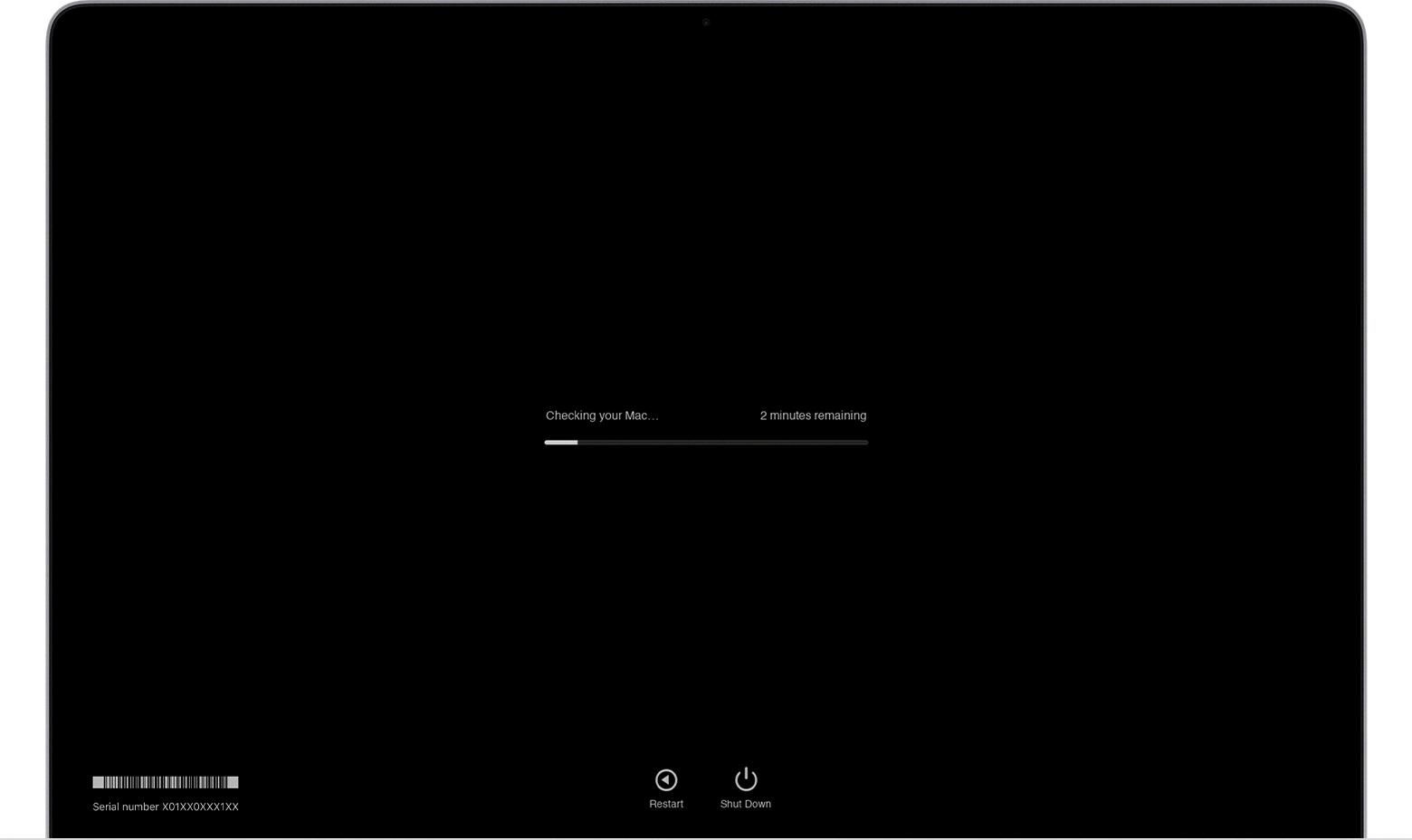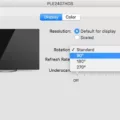Mac is a popular brand of computers developed by Apple Inc. Known for their sleek design and high performance, Macs are widely used by individuals and professionals alike. However, like any electronic device, Macs can occasionally encounter hardware issues that may affect their functionality. In such cases, Apple Diagnostics can be a valuable tool to help identify and diagnose these problems.
Apple Diagnostics, previously known as Apple Hardware Test, is a built-in diagnostic tool that comes pre-installed on Mac computers. It is designed to run a series of tests on various hardware components to identify any issues that may be causing problems. By pinpointing the faulty hardware component, users can take the necessary steps to resolve the issue and get their Mac back up and running smoothly.
To access Apple Diagnostics, you need to start your Mac and continue to press and hold the power button. Release the button when you see the startup options window, which includes a gear icon labeled “Options.” In this window, you can use your keyboard to press Command (⌘)-D. This will initiate the Apple Diagnostics tool.
Once you have entered Apple Diagnostics, the tool will automatically start running a series of tests on your Mac’s hardware components. These tests include checking the RAM, power controller, logic board, battery, and other wireless modules. The tool will provide you with detailed information about any hardware issues it detects, allowing you to take appropriate steps to address them.
It is important to note that Apple Diagnostics is not a magical solution that can fix all hardware issues. Its primary purpose is to help users diagnose hardware problems so that they can seek further assistance or repair. If Apple Diagnostics identifies a hardware issue, it is recommended to contact Apple Support or an authorized service provider for further guidance.
In addition to Apple Diagnostics, there are also other ways to troubleshoot hardware issues on a Mac. These include resetting the System Management Controller (SMC) and the Non-Volatile Random-Access Memory (NVRAM). However, it is important to note that these advanced troubleshooting steps should only be performed if you have a good understanding of your Mac’s hardware and are comfortable with making technical changes.
Apple Diagnostics is a valuable tool for Mac users to identify and diagnose hardware issues. By running a series of tests on various hardware components, it helps pinpoint the faulty component and provides detailed information to assist in resolving the issue. If you suspect a hardware problem with your Mac, accessing Apple Diagnostics can be a useful step towards finding a solution.
How Do You Start Your Mac in Diagnostic Mode?
To start your Mac in diagnostic mode, follow these steps:
1. Turn on your Mac by pressing the power button.
2. Continue to hold the power button until you see the startup options window on your screen. This window will display a gear icon labeled “Options.”
3. Once you see the startup options window, release the power button.
4. On your keyboard, press and hold the Command (⌘) key, and then press the D key. You can release both keys after pressing them.
5. Your Mac will now start up in Apple Diagnostics mode. This mode will automatically run a series of tests on your Mac’s hardware to check for any potential issues or errors.
6. Wait for the diagnostics process to complete. This may take a few minutes, and your Mac’s screen may display a progress bar or other indicators.
7. Once the diagnostics are finished, your Mac will display a report with any detected hardware issues, if applicable. You can review this report to identify any problems that may be affecting your Mac’s performance.
8. If no issues are found, you can exit Apple Diagnostics by clicking the “Restart” or “Shutdown” buttons.
9. If any hardware issues are detected, you may need to contact Apple Support or visit an Apple Authorized Service Provider for further assistance.
Please note that Apple Diagnostics may vary slightly depending on the model and version of macOS you are using. It is always recommended to ensure you have a backup of your important data before running any diagnostic tests on your Mac.

Is There A Diagnostic Tool For Mac?
There is a diagnostic tool for Mac called Apple Diagnostics. This tool was previously known as Apple Hardware Test. Its purpose is to help users identify and troubleshoot potential hardware issues on their Mac computers.
To use Apple Diagnostics, follow these steps:
1. Ensure your Mac is connected to a power source.
2. Disconnect all external devices, except for the keyboard, mouse, display, and Ethernet cable, if applicable.
3. Shut down your Mac.
4. Turn on your Mac and immediately press and hold the “D” key on your keyboard until the Apple Diagnostics screen appears. If your Mac was released before June 2013, you may need to use the “Option + D” key combination instead.
5. Once Apple Diagnostics is open, it will automatically start scanning your Mac for hardware issues. This process may take some time.
6. Apple Diagnostics will display any hardware issues it detects, along with a reference code and brief description. Make note of this information.
7. If Apple Diagnostics doesn’t find any hardware issues, it will display a message indicating that no hardware issues were found.
8. If hardware issues are found, you can use the reference code to search for more information on Apple’s support website or contact Apple Support for further assistance.
Apple Diagnostics is a useful tool for diagnosing hardware problems on Mac computers. By following the steps outlined above, you can identify and troubleshoot potential hardware issues on your Mac.
What Does Mac Diagnostics Check?
Apple Diagnostics is a diagnostic tool integrated into Mac computers that enables users to identify and troubleshoot hardware issues. This comprehensive test helps determine the specific components causing problems and identifies any system failures. Here is a breakdown of what Mac Diagnostics checks:
1. RAM: Apple Diagnostics verifies the integrity of your computer’s Random Access Memory (RAM) modules. It checks for any potential issues or errors that may be affecting the performance of your Mac.
2. Power Controller: The test also examines the power controller or power management unit (PMU) of your Mac. It ensures that the power supply and management functions are working correctly.
3. Logic Board: Mac Diagnostics checks the logic board, also known as the mainboard or motherboard. This critical component houses the central processing unit (CPU), memory slots, and other essential hardware. Any issues with the logic board can cause various system malfunctions.
4. Battery: If your Mac has a built-in battery, the diagnostics test will assess its performance. It checks the battery’s health, charging capacity, and any potential issues that may affect its functionality.
5. Wireless Modules: Apple Diagnostics also examines the wireless modules of your Mac, including Wi-Fi, Bluetooth, and other connectivity features. This helps identify any connectivity problems or hardware failures related to wireless communication.
6. Additional Components: Apart from the above-mentioned hardware, Mac Diagnostics may also test other components such as the graphics card, hard drive, and other peripherals connected to your Mac.
Apple Diagnostics provides a comprehensive analysis of your Mac’s hardware, allowing you to pinpoint any faulty components that may be causing system issues. This information helps in troubleshooting and determining the necessary repairs or replacements required to resolve the problem efficiently.
Conclusion
Apple Diagnostics is a powerful tool that can help Mac users identify and troubleshoot hardware issues. With just a few simple steps, users can initiate the diagnostic test and gain valuable insights into the health of their Mac’s components.
By running Apple Diagnostics, users can effectively pinpoint the specific hardware component that may be causing problems, such as RAM, power controller, logic board, battery, or wireless modules. This allows for a more targeted and efficient approach to resolving any hardware-related issues.
Apple Diagnostics not only helps in diagnosing problems but also provides peace of mind to Mac users. By being able to identify the root cause of any hardware malfunction, users can make informed decisions about repairs or replacements, saving both time and money.
Furthermore, the accessibility of Apple Diagnostics makes it a valuable tool for both novice and advanced Mac users. It can be easily accessed during the startup process and provides clear instructions for running the diagnostic test. This user-friendly approach ensures that anyone can utilize this feature, regardless of their technical expertise.
Apple Diagnostics is an excellent resource for Mac users who suspect hardware issues. By using this built-in tool, users can quickly identify and address any problems, ensuring the optimal performance and longevity of their Mac devices.








